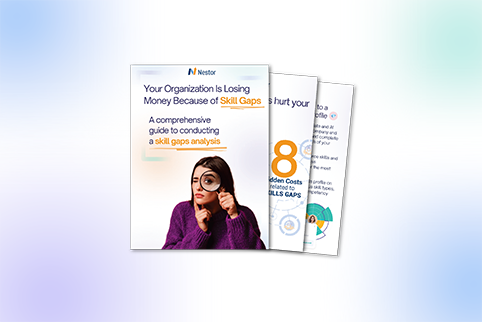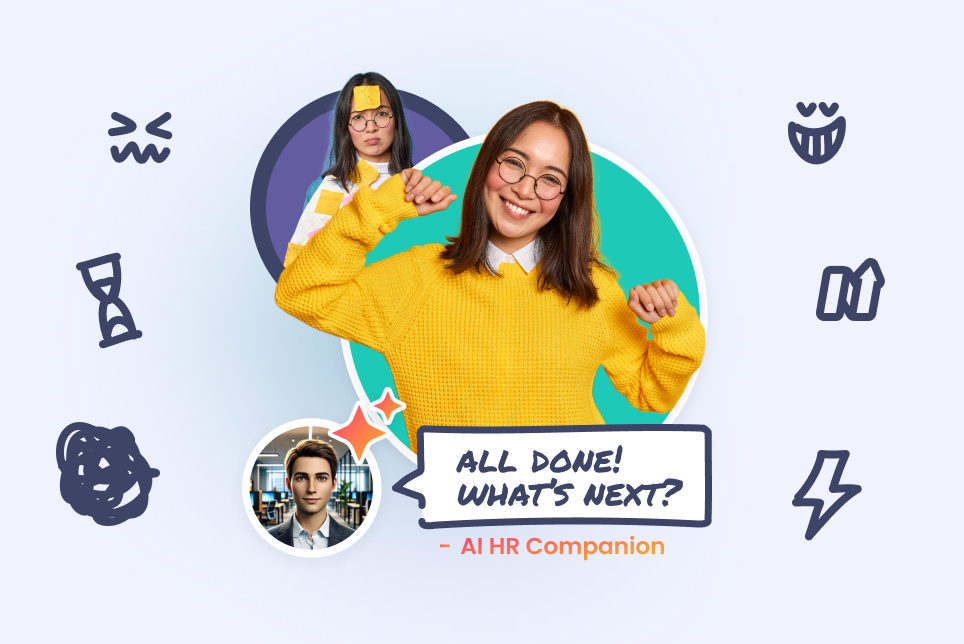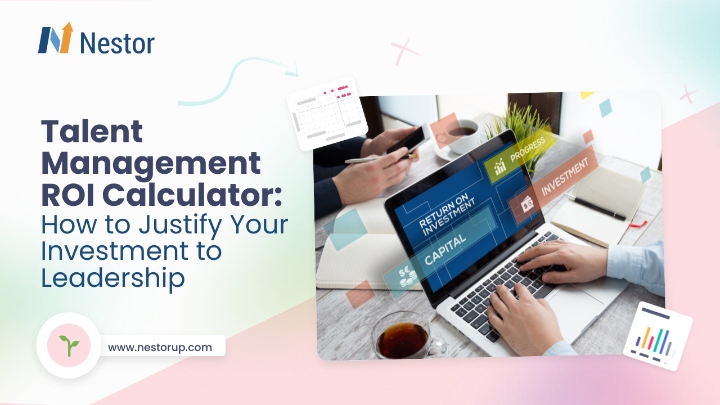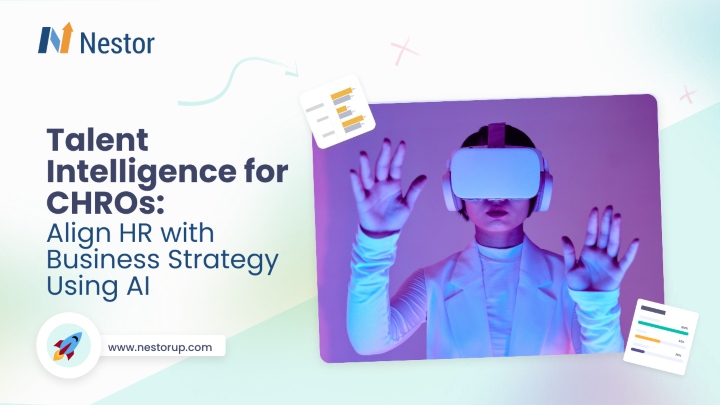
Contents
There’s been a quiet recalibration happening across HR departments, and it’s not subtle anymore. What began as simple automation (automated resume sorting, calendar scheduling, payroll processing) has evolved into something more complex, more strategic, and frankly, more intelligent. AI in HR is not only changing how HR functions; it’s reshaping the expectations of what HR is.
What does it mean when a machine can predict which candidate will stay longer, which teams are at risk of disengagement, or which employees might burn out before their manager even notices the signs? That’s not science fiction. That’s how many HR tech platforms are already functioning today.
According to a 2024 Gartner survey, nearly 76% of HR leaders say their organization is already using or planning to use AI-driven tools to support decision-making in areas like hiring, internal mobility, and performance evaluation. And that number is rising.
This shift isn’t just about streamlining admin-heavy processes. It’s about redefining the role of HR itself.
Traditional responsibilities like talent acquisition, performance management, and learning & development are no longer exclusively human domains. They’re being co-owned by systems trained on millions of data points, with the capacity to operate at a scale no HR professional could ever match.
But here’s where things get complicated. The more sophisticated these systems become, the more the humans behind them need to understand how they work. Because no matter how efficient the algorithm, no AI tool is truly “smart” without context, ethical oversight, and human judgment.
That means HR professionals are now expected to develop a completely new skill set: one that combines core human competencies—empathy, communication, judgment—with technical fluency in data analytics, machine learning, and algorithmic bias.
In other words, the future of HR won’t be about choosing between humans or machines. It will demand professionals who can work fluently with both. And that’s where the real shift is happening, not just in the tools, but in the talent required to lead them.
So yes, HR is getting smarter. The real question is: are we keeping up?
From Gut Instinct to Algorithmic Precision
For a long time, HR operated in a space shaped more by instinct than by data. Hiring managers made decisions based on gut feelings during interviews. Performance reviews were often annual, subjective, and heavily influenced by bias. Engagement surveys were conducted sporadically, then filed away with little more than anecdotal follow-up.
Today, that model is increasingly untenable.
AI is transforming HR from a department that reacts to one that can anticipate, recommend, and optimize in near real time. And not just on the operational front. We’re talking about the strategic core of people management (talent acquisition, performance tracking, workforce planning, succession forecasting) all becoming data-driven, algorithmically enhanced, and continuously updated.
Let’s take recruitment as an example.
Platforms now analyze not only the content of candidate responses but also vocal tone, facial microexpressions, and pacing. They offers predictive analytics that identify which applicants are most likely to succeed based on patterns from historical data and contextual job-matching models. It doesn’t just speed things up; it surfaces talent that might otherwise go unnoticed.
In fact, research from PwC shows that 52% of HR leaders are already using AI-based tools in talent acquisition, with another 36% planning to implement them within the next two years.
But it’s not just about algorithms being faster. It’s about algorithms being more consistent. Unlike human assessors, an AI system doesn’t get tired. It doesn’t subconsciously penalize someone for showing up late to a Zoom call because of a connectivity issue.
And, ideally, it doesn’t carry the same biases. Though let’s be clear: AI can inherit bias from training data, and often does. The difference is, you can audit, test, and refine a model. That’s harder to do with human judgment.
Still, the adoption isn’t without hesitation.
As Associate Professor Connie Zheng, co-director of UniSA’s Centre for Workplace Excellence, points out, many companies remain reluctant to rely on AI for hiring decisions. Not because they question its speed, but because of concerns about biased data and limited transparency. Others believe their HR teams are competent enough to manage recruitment without it; until workloads spike, teams shrink, or leadership demands faster results.
That said, precision is not a substitute for perception. Just because an algorithm flags an employee as disengaged doesn’t mean the reason will be obvious or solvable by data alone. Numbers can point to a trend, but they can’t decode workplace culture or interpersonal dynamics without human insight. That’s where HR’s evolving role becomes most evident: it’s no longer about administering systems; it’s about interpreting them.
This creates a clear divide between two kinds of HR practitioners. Those who remain tool operators, relying on platforms without understanding the mechanics behind them, and those who are becoming data-literate interpreters, using AI not as a crutch but as an instrument.
Recruiting Is Starting to Feel Like Online Dating
There’s something increasingly familiar about the way AI-driven recruitment platforms function and it’s not coincidental. Much like the algorithms behind dating apps, modern recruitment systems are designed to predict compatibility based on patterns, preferences, and prior outcomes.
The result? A process that increasingly feels like algorithmic matchmaking rather than traditional hiring.
But the comparison isn’t just rhetorical. Many platforms use neuroscience-based assessments to gauge cognitive and emotional traits, matching candidates to roles where people with similar profiles have thrived. They also scan résumés, social profiles, internal databases, and historical performance outcomes to surface candidates who weren’t even on your radar.
We’re talking about systems that:
- Evaluate how candidates write, speak, and respond, not just what they say
- Track how fast someone completes an application, or where they hesitate
- Predict future performance based on mobility patterns and inferred learning agility
And just like in dating, much of this happens behind a digital curtain. The recruiter sees a ranked shortlist. The candidate sees… silence.
In fact, 61% of talent acquisition professionals believe AI and analytics can improve how they measure quality of hire, by tracking new hires’ performance and retention over time.
That’s where the tension is rising. Efficiency is increasing, but so is opacity. What happens when a qualified candidate is rejected by an algorithm and no one on the hiring team knows why? Or when a recruiter starts to over-rely on AI shortlists without questioning the assumptions built into the model? That’s not just a hypothetical, these issues are surfacing now, particularly in highly automated enterprise environments.
This is where AI literacy becomes a core competency, not just a technical curiosity.
If recruiters can’t explain why a system selected, or filtered out a candidate, their credibility erodes. More importantly, so does candidate trust. The talent market is already strained. Layer in opaque automation, and you risk alienating exactly the people you’re trying to reach. As Hung Lee, Curator at Recruiting Brainfood, put it:
The single most important thing talent leaders need to do is ‘AI self-enable.’ You cannot make decisions about the direction of your AI-enabled Talent Acquisition team if you are not a fluent user of AI yourself.
— Hung Lee, Curator at Recruiting Brainfood
But we need to reiterate that there is a clear line. AI is not replacing human recruiters. It’s replacing the manual, repetitive, low-value tasks they’ve had to endure for years. Done well, it frees them up to focus on what actually moves the hiring process forward, context, conversation, negotiation, judgment. But that only happens when the recruiter understands what the machine is doing under the hood.
And that requires more than just learning how to operate an ATS dashboard. It means asking better questions: What data trained this model? How recent is that data? How are results weighted? Are we reinforcing past hiring patterns under the guise of objectivity?
If you’re in recruitment and you’re not interrogating your AI tools, you’re not using them. You’re being used by them. And while that might sound dramatic, it’s already affecting hiring outcomes at scale.
The goal isn’t to reject the algorithm. It’s to reclaim agency within it.
AI in Performance Reviews: The End of Office Politics?
Performance reviews have long been one of HR’s most delicate balancing acts: high-stakes, emotionally charged, and frequently misaligned with actual performance. Managers struggle with memory bias, employees feel undervalued or misunderstood, and HR ends up playing mediator between perception and reality.
AI hasn’t solved these problems. But it’s reframing them.
Platforms like Nestor are challenging the entire model of how performance is tracked, understood, and acted upon. Rather than relying on episodic feedback and top-down evaluations, Nestor integrates real-time data streams to surface a more accurate picture of how people contribute over time; across projects, teams, and skill domains.
What’s shifting isn’t just how performance is evaluated, but who controls the narrative.
Instead of waiting for a manager to remember key accomplishments at the end of the quarter, employees can now see their progress tracked continuously. Nestor, for example, ties performance data directly to skill development, internal mobility readiness, and learning activity, giving both HR and employees visibility into growth trajectories that aren’t just based on gut feel or static goals.
Here’s what AI enables in modern performance management:
- Continuous feedback: Platforms collect regular, lightweight feedback from peers and managers across time, no more single-point-in-time snapshots.
- Sentiment analysis: Natural Language Processing (NLP) engines evaluate tone and emotion in written feedback, detecting signs of disengagement, tension, or high motivation.
- Goal alignment tracking: Systems track individual goals against team or company OKRs automatically, flagging progress gaps early.
- Behavioral trend monitoring: Some tools assess collaboration patterns, responsiveness, and communication styles over time to build a more holistic view of performance.
And yet, there’s a fine line between visibility and surveillance.
Employees aren’t wrong to feel uneasy when every Slack message, check-in frequency, or email response rate is fed into a machine that could influence promotions or terminations. Transparency without context breeds anxiety. AI doesn’t “understand” intent. It tracks patterns. If those patterns are interpreted without human nuance, the outcome can easily be unfair, even if technically accurate.
This brings us to a critical point: HR professionals need to evolve from process facilitators to data translators. AI outputs are only as valuable as their interpretation.
If a system flags someone as “underperforming” based on behavioral signals, HR must be equipped to ask:
- What exactly is being measured here?
- Could cultural or neurodivergent factors be influencing the data?
- Is this signal consistent across multiple inputs or is it an anomaly?
Understanding these nuances requires a blend of soft and technical skills that weren’t traditionally associated with HR. In fact, interpreting algorithmic outputs ethically and accurately may soon be as fundamental as conflict resolution or employee engagement strategy.
The promise of AI is that it can reduce bias, surface early warnings, and give high-performing employees the recognition they deserve, even if they’re quiet operators. But without thoughtful human oversight, you risk replacing one flawed system with another, just dressed in code and confidence.
So, is this the end of office politics? Not quite. But if used responsibly, AI might just make performance reviews less about politics and more about patterns that actually matter.
Learning and Development: Meet Your New Digital Coach
Corporate learning used to follow a rigid, top-down format: set programs, standardized modules, and compliance-first content that often felt disconnected from real career paths. Employees sat through it because they had to, not because it actually helped them grow.
That model is rapidly losing relevance.
AI is now shaping learning ecosystems that respond to the individual intelligently, dynamically, and, in some cases, with unnerving precision. The new AI-powered learning experience is personalized, predictive, and often surprisingly intuitive.
Research by Deloitte suggests that 94% of companies using AI in L&D benefit from data-driven insights, which help optimize training programs, identify skill gaps, and improve employee performance.
Take platforms like Coursera for Business, or LinkedIn Learning. These systems don’t just catalog content. They recommend development paths based on role requirements, skills gaps, learning behavior, and even career mobility trends within the organization. They function more like a digital coach than a training repository.
Here’s what that looks like in practice:
- Skills inference: AI identifies what an employee likely knows based on previous roles, certifications, and project work even if those skills haven’t been formally logged.
- Adaptive content suggestions: Based on past learning habits, course ratings, and time-spent metrics, the system curates training material to suit an individual’s learning style and pace.
- Career trajectory forecasting: Some platforms estimate likely internal career moves and recommend learning modules that align with that trajectory, preparing employees for lateral or upward mobility.
- Microlearning nudges: Instead of long courses, AI breaks content into contextual, just-in-time lessons, delivered via Slack, Teams, or mobile notifications.
From a business standpoint, this addresses a key concern: the widening skills gap. Organizations can no longer afford to reskill on a slow cycle. Competencies in data analytics, automation, digital collaboration, and yes, AI itself, need to be developed as work evolves, not six months later.
But with this capability comes a less discussed implication: accountability shifts from the L&D department to the learner. When the system knows what you need to learn and when and sends it to you automatically, the excuse of “I didn’t know where to start” disappears.
This brings up an emerging tension: autonomy vs. pressure. Personalized learning experiences can empower, but they can also overwhelm. If your dashboard constantly reminds you of skill deficiencies, if your internal mobility feels gated by an AI-assessed readiness score, does the system feel helpful or quietly punitive?
HR leaders need to consider the design of these learning ecosystems carefully.
Nudges should be constructive, not coercive. Skill frameworks should account for diverse career paths, not just high-performer templates. And most importantly, AI in learning must not replace managerial coaching. It should support it.
An AI tool can flag that someone lacks leadership readiness. But only a human leader can understand why, and what support they might actually need.
From Compliance to Capability: Building AI-Literate Teams
Let’s step out of the system for a moment and look at the people managing it. Because here’s the truth: the success of AI in HR has less to do with which tools you’re using and everything to do with who’s using them.
The misconception is that AI systems are plug-and-play; that they “just work.” But in reality, these tools are complex, adaptive, and often opaque. If your HR team lacks the foundational skills to understand what these systems are doing or why they’re behaving a certain way, then decisions are being made without true accountability. And that’s a problem.
We’re well past the point where AI literacy can be considered a “nice to have.” It’s fast becoming a strategic imperative for HR professionals across the board, from recruiters to L&D leaders to HRBPs and CHROs.
Here’s what that skill shift actually looks like in practice:
Core AI Skills HR Professionals Need (Now, Not Later)
- Data interpretation (beyond dashboards): Not just reading metrics, but understanding the relationships between inputs, outputs, and anomalies in AI-generated insights.
- Prompt and model interaction: HR teams need to know how to structure inputs when interacting with generative AI tools, whether refining a chatbot’s response style or creating talent workflows via prompt templates.
- Bias recognition in algorithms: It’s no longer enough to hope the system is neutral. HR must be trained to spot potential model bias, especially in hiring, promotions, or performance evaluations.
- System training and oversight: AI tools “learn” from data. If your internal systems feed it flawed, outdated, or biased information, the model will replicate those flaws at scale. HR must play a role in data curation and governance.
- Ethical and privacy awareness: Understanding what data shouldn’t be collected is just as important as leveraging what is. With increased access to behavioral and biometric data, HR’s ethical responsibility is expanding rapidly.
This isn’t about turning HR teams into engineers. It’s about closing the fluency gap, the space between technical systems and strategic human decision-making. You don’t need to code an algorithm, but you do need to ask the right questions when it fails. Or when it works a little too well.
Consider this scenario: a generative AI tool is used to auto-draft employee feedback based on project data and communication logs. Sounds efficient, right? But what happens when that feedback carries tone or assumptions that don’t align with company values? If HR doesn’t understand how that output was generated, it’s impossible to intervene responsibly.
And here’s the deeper issue: if HR professionals aren’t equipped to understand AI systems, they lose influence. They become passive facilitators of outcomes they no longer control.
AI Skills People Need in 2025 (Not Just in HR)
Let’s stop calling them “future skills.” It’s 2025. These are current capabilities, already shaping hiring decisions, promotion criteria, and how work gets done in teams from product to procurement. Whether someone works in marketing, operations, design, finance, or policy, the expectations are shifting fast. The tools are smarter. The workflows are automated. The people need to catch up.
So, what exactly are we talking about when we say “AI skills”?
Not everyone needs to be an engineer. But across most professional domains in 2025, people are expected to develop hybrid competencies that blend human judgment with system-level awareness. Here’s what that looks like, broken down by capability, not job title.
1. AI Fluency (The New Digital Literacy)
Not technical depth; conceptual clarity. Can you explain how a recommendation engine works? Why a model might be biased? What “training data” means?
- Useful in: Marketing, HR, Product, Customer Service
- Without it: Employees trust tools blindly or reject them prematurely.
2. Prompt Design & Input Engineering
Writing for machines is a skill. Whether it’s asking a chatbot to summarize a contract or designing prompts for content generation, the quality of the output depends on the quality of the input.
- Useful in: Content, Legal, Sales, Design
- Without it: Teams waste time “fixing” AI instead of guiding it properly.
3. Data Interpretation (With Context Awareness)
Most platforms now offer predictive dashboards. But interpreting them requires more than reading charts. What patterns matter? What’s noise? What decisions shouldn’t be made from this data
- Useful in: Finance, Ops, Strategy, HR
- Without it: Business decisions become reactive or misinformed.
4. Bias Detection & Ethical Oversight
Understanding where bias can creep in (hiring, facial recognition, customer segmentation) and how to question outputs critically.
- Useful in: Recruitment, Compliance, Risk, UX
- Without it: You reinforce inequities under the guise of optimization.
5. Model Interaction & Customization
For teams working with embedded AI (e.g. Salesforce Einstein, SAP AI, Microsoft Copilot), the ability to adjust parameters, provide feedback to models, and collaborate with system engineers is becoming standard.
- Useful in: Product, Ops, Tech-Adjacent Roles
- Without it: Employees feel disempowered and workflows stall.
6. Decision-Making with AI in the Loop
Knowing when to trust a machine and when to override it. Critical thinking in hybrid workflows is increasingly tied to how a decision was reached, not just what the outcome was.
- Useful in: Leadership, Sales, HR, Legal
- Without it: AI becomes either a crutch or a scapegoat.
7. Basic Automation Logic & Workflow Mapping
You don’t need to write code, but you do need to understand logic chains, especially when working with no-code tools like Zapier, Airtable Automations, or Make.
- Useful in: Ops, Admin, Customer Success
- Without it: Teams experience blockages instead of becoming streamliners.
8. Collaboration in AI-Augmented Teams
Working with people who use different AI tools, or none at all, requires coordination. Sharing outputs responsibly, checking for drift in results, and communicating system limits are emerging team norms.
- Useful in: Every team
- Without it: Misunderstandings multiply and productivity suffers.
9. Continuous Learning Mindset (Not Just L&D Rhetoric)
AI tools evolve fast. What worked last quarter might not next quarter. Employees need to normalize skill refresh cycles and organizations need to support that with time, tools, and relevance.
- Useful in: Everyone, everywhere
- Without it: Skills decay and talent mobility stalls.
Emotional Intelligence vs. Artificial Intelligence: Who Wins?
As AI takes on more responsibilities in HR like screening, evaluating, recommending, even generating performance feedback; it raises an unavoidable question: what happens to the emotional core of people management? The nuance, the empathy, the ability to sit with discomfort or complexity without immediately categorizing it?
AI can simulate empathy, but it doesn’t feel anything. It can recognize language patterns that suggest stress or disengagement, but it can’t understand the why behind them. That kind of comprehension still requires people. More specifically, it requires emotional intelligence.
And paradoxically, the more advanced our tools become, the more valuable emotional intelligence becomes in contrast.
Here’s why:
- AI handles data; humans handle context. A dashboard might show a team’s productivity is declining. But it won’t know that two key contributors are dealing with personal loss, or that a toxic dynamic is brewing under the surface of Zoom calls.
- AI can recommend what’s efficient; humans still define what’s fair. An algorithm might suggest laying off a department based on redundancy scores. But fairness, morale, and long-term trust can’t be calculated in binary.
- AI can scale insight; humans scale trust. AI might help identify trends across thousands of employees, but building the kind of organizational culture where people feel safe enough to be honest. That doesn’t come from code. It comes from connection.
This doesn’t mean EQ and AI are in conflict. In fact, they’re increasingly interdependent.
Without AI, HR risks being too slow to identify emerging problems. Without EQ, HR risks responding with actions that feel cold, misaligned, or damaging, even when the data is technically correct.
Here’s a useful analogy: AI gives you the sheet music. But HR still has to conduct the orchestra. Timing, tone, interpretation; those are human judgments, not machine outputs.
The real winners in HR won’t be the people who pick sides between artificial and emotional intelligence. They’ll be the ones who understand when to lead with one, and how to support it with the other.
One System, Three Dimensions: Skills, Strategy, and Scalability
While much of the conversation around AI in HR has focused on automation and analytics, the harder challenge lies in skills development; at scale, in context, and with strategic alignment. That’s where platforms like Nestor stand out.
Unlike traditional HR systems that treat performance, learning, and career planning as separate silos, Nestor approaches these elements as part of a dynamic, interconnected framework. At its core, it’s an AI-powered skills and talent platform designed to surface, track, and evolve employee capabilities in real time, aligned to both individual growth and organizational objectives.
That sounds abstract. Here’s what it looks like in practice:
- Skills Intelligence Engine: Nestor maps skills across your workforce, not just by role or resume, but based on behaviors, learning activity, feedback, and career aspirations.
- Personalized Learning Journeys: Once gaps are identified, the system recommends learning pathways tailored to an employee’s goals and their role within the organization’s evolving priorities.
- Performance + Potential = Actionable Insight: By connecting performance data with skills progression, Nestor offers managers real-time visibility into who’s ready for stretch assignments, who needs support, and what future roles are plausible. Not in theory, but based on behavioral signals.
- Internal Mobility Intelligence: One of its most valuable features: AI-powered career pathing that shows employees where they can move internally, what skills they’ll need, and what steps to take next, without needing to leave the company to grow.
What makes this different from legacy systems? Nestor isn’t just documenting past achievements, it’s projecting future readiness. It gives HR leaders the infrastructure to move from reactive L&D to strategic workforce shaping.
In a landscape where reskilling and retention are business-critical, having a platform that actually understands your talent ecosystem—skills, behaviors, aspirations, gaps—isn’t just useful. It’s foundational.
And perhaps more importantly, it reinforces what should be the central theme of any “AI in HR” strategy: people aren’t just data points to manage. They’re capabilities to develop.
Final Thoughts About AI in HR
It’s no longer a matter of whether AI belongs in HR. That debate is over. The question now is who within your organization understands how to use it, and who’s still working off instinct, spreadsheets, and procedural memory.
If HR leaders want a seat at the strategic table in 2025 and beyond, they’ll need more than empathy and organizational knowledge. They’ll need systems fluency, data confidence, and the ability to ask the kind of questions machines can’t anticipate. Because AI may process faster, but it still needs direction. That direction is your job.
So what now? What does a realistic, grounded next step look like?
If You’re Leading an HR Function, Prioritize These:
- Audit your team’s current AI exposure and fluency. Who understands what the tools are doing and who’s relying entirely on vendor logic or guesswork?
- Invest in AI learning, not just for tech teams, but for HR. Partner with L&D to bring in relevant, role-based AI upskilling. Think less “machine learning theory,” more “real use cases for everyday HR tasks.”
- Rebuild workflows with AI as a collaborator, not a replacement. Identify what processes should be automated and what decisions still need a human pulse.
- Interrogate your data sources. What patterns is your AI learning from? Are you reinforcing historical bias under a layer of automation?
- Start defining ethical boundaries now. As AI systems evolve, waiting for a crisis to define your policy is no longer defensible. Set limits before you need them.
And just as important: translate this knowledge outward. HR is responsible for more than its own tools. It’s responsible for shaping how everyone else in the organization adapts to AI.
That means equipping managers to read AI-driven performance insights responsibly. That means supporting marketing and finance teams as they reskill around automation. It means embedding AI skills into career pathways, not just job descriptions.
Because the most disruptive thing about AI in HR isn’t the tech, it’s the redefinition of what “HR” actually means.
It’s not simply people operations anymore. It’s people strategy at algorithmic scale.
And those who lead it well? They won’t just keep up. They’ll redefine the standard everyone else tries to follow.
Frequently Asked Questions About AI in HR
Won’t AI make HR less human?
Only if it’s misused. AI can automate tasks, surface hidden insights, and flag patterns earlier but empathy, listening, and cultural judgment are still entirely human domains. The goal is augmentation, not replacement. Used thoughtfully, AI actually frees HR teams to spend more time on the relational side of the work.
What’s the biggest risk of using AI in hiring?
Bias amplification. If your AI tools are trained on historical hiring data that reflects past inequities, they can perpetuate or even scale that bias. Transparency, auditability, and human oversight are essential. Recruiters and HR leaders must understand how their tools score candidates and when to override those scores.
How do I know if my HR team has the skills to work with AI?
A good starting point: Can your team explain how your current tools make decisions? If not, you may have an AI literacy gap. Key skills include data interpretation, ethical analysis, prompt fluency (especially with generative tools), and the ability to translate algorithmic outputs into meaningful action.
Do we need to reskill everyone in the company for AI?
Not everyone needs to code or understand neural networks, but AI fluency will become essential across functions. That means knowing how to interact with AI systems, question outputs, and understand where human oversight is critical.
What’s the first step for HR teams looking to implement AI responsibly?
Start with awareness. Audit the tools you’re already using. Many HR platforms already embed AI, even if it’s not obvious. Then assess your team’s fluency. From there, develop internal guardrails: what will AI assist with? What stays human-led? Responsible implementation requires both tech literacy and cultural foresight.
How do we measure the ROI of AI in HR?
Look beyond cost savings. Yes, AI can reduce time-to-hire or automate admin tasks. But real ROI comes from improved decision quality, reduced bias, more agile workforce planning, and stronger retention. If your AI tools are helping you place the right people in the right roles faster—and with more insight—you’re already seeing value.










